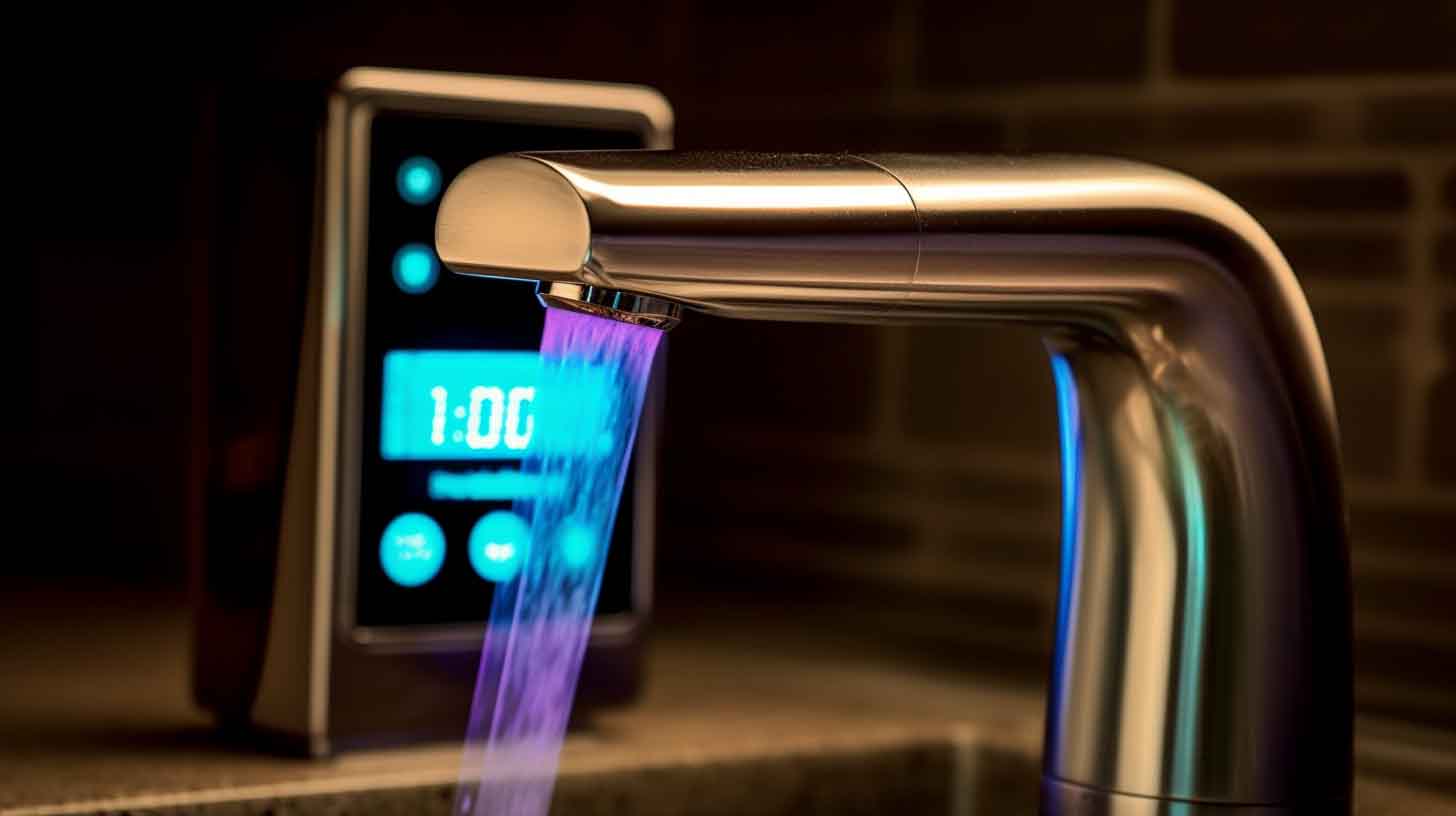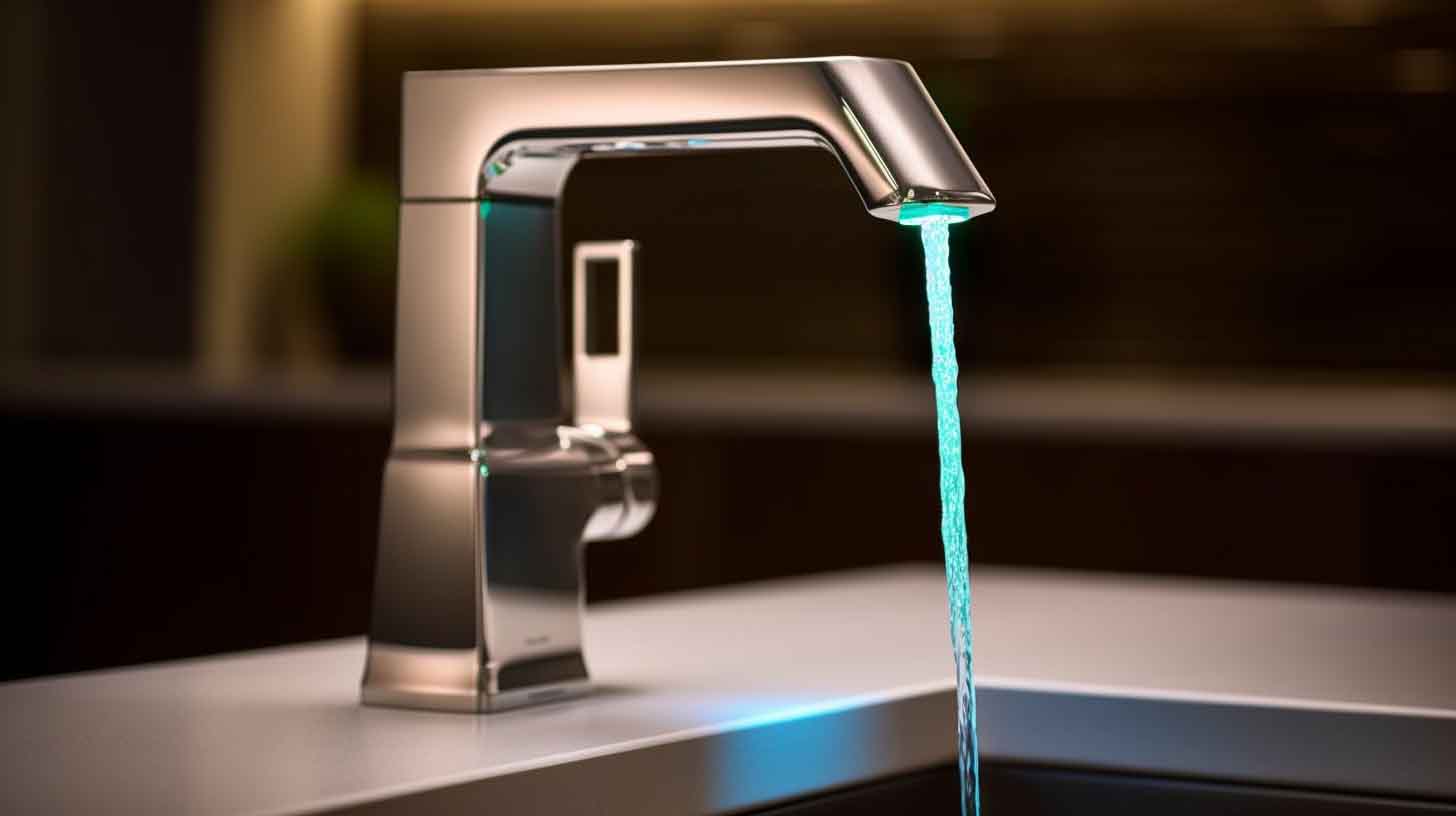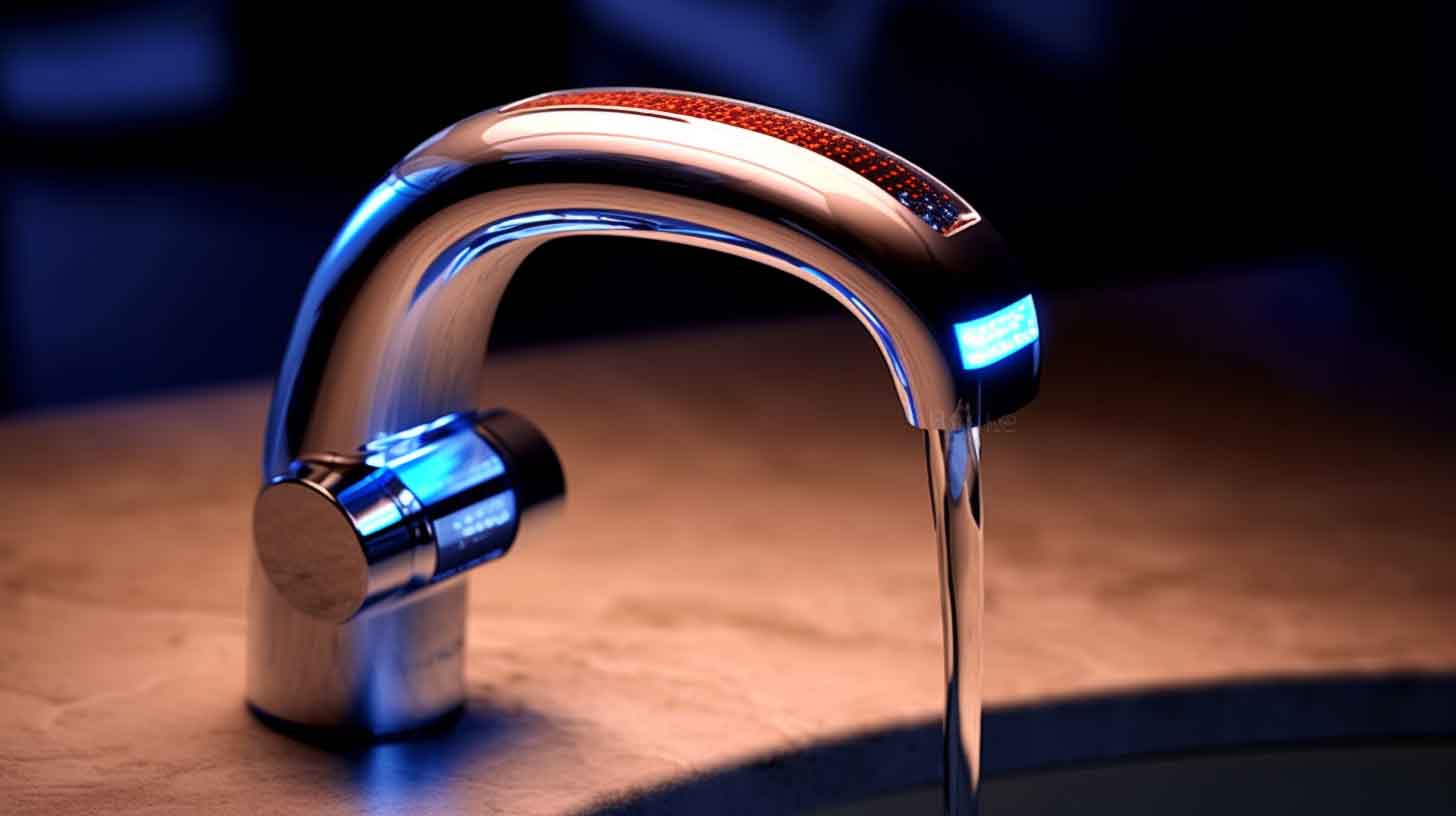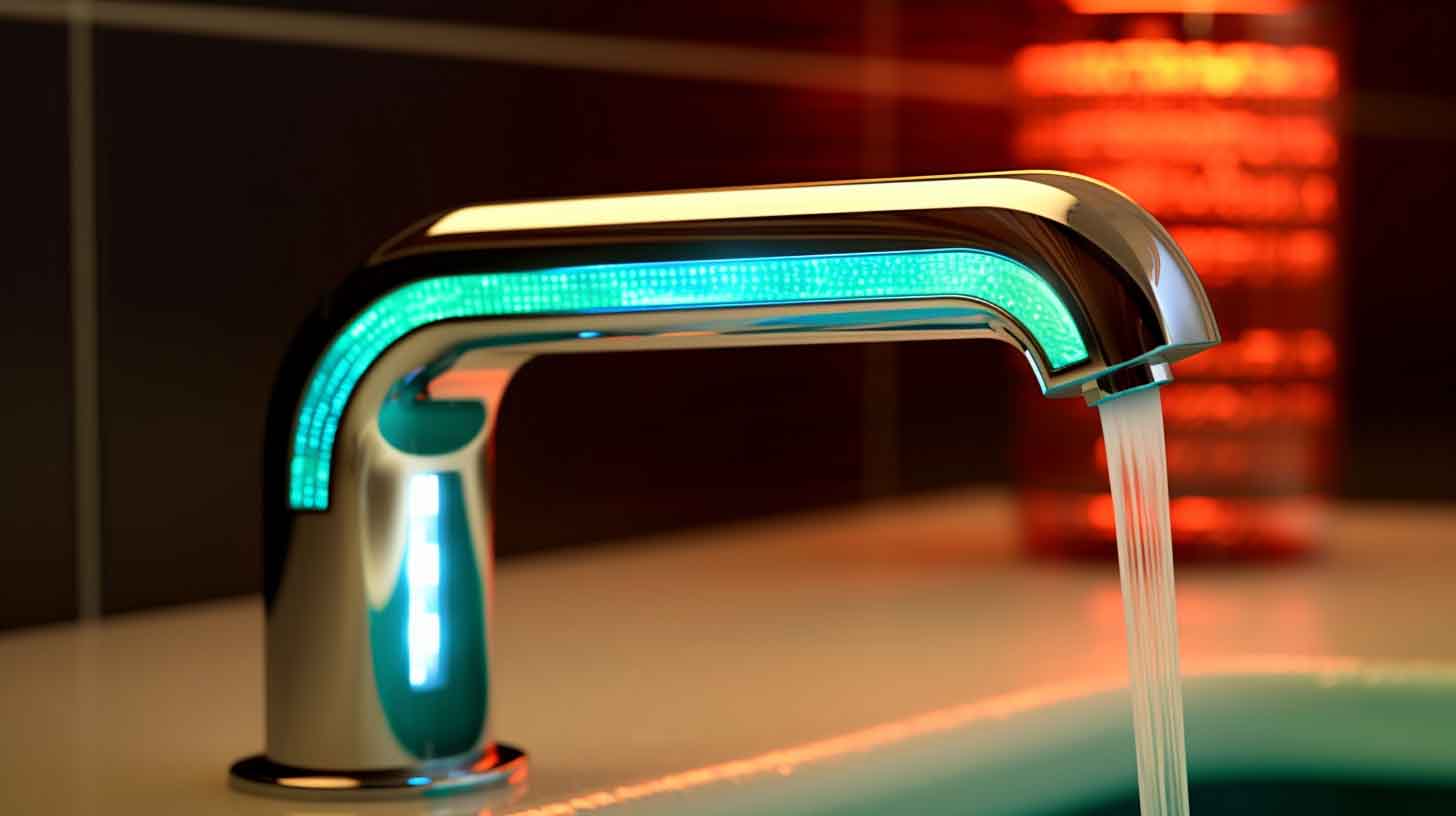Smart faucets are an innovative technology that have been revolutionizing the traditional bathroom fixture for many years. They are highly sought after by tech-savvy homeowners due to their convenience and modern design.
Smart faucets are equipped with a variety of features that make them an attractive option for those who want to upgrade their bathroom. This article will provide a comprehensive guide to the evolution of smart faucets and the benefits of installing them. It will cover the definition of a smart faucet, the various features they offer, an overview of the installation process, and the different types of smart faucets available.
Additionally, the article will provide an in-depth look at the advantages of having a smart faucet, such as increased water efficiency, improved hygiene, and advanced technology. Finally, readers will be provided with useful tips on how to select the best smart faucet for their needs.

- Smart faucets revolutionize traditional bathroom fixtures with their convenience and modern design.
- They offer features such as touchless activation, hands-free operation, voice-activation, and automated water shutoff.
- Smart faucets contribute to energy efficiency and water conservation by eliminating manual operation and preventing water dripping and leaking.
- They provide greater control over water usage, improved hygiene, and advanced technology.
A smart faucet is a type of plumbing fixture that is outfitted with advanced technology to enable additional functionality.
Smart faucets provide homeowners with a more convenient, efficient, and hygienic means of controlling water flow and temperature. They are equipped with sensors that can detect movement, allowing them to automatically turn on and off when necessary.
This technology also contributes to energy efficiency and water conservation, as it eliminates the need for manually turning the faucet on and off. Additionally, they are designed to prevent water from dripping and leaking, thus saving water and money.
Smart faucets offer a host of benefits, from improved convenience and energy-efficiency to enhanced hygiene and water conservation, making them an attractive option for tech-minded homeowners.
With these advantages in mind, the next section will explore the various benefits of owning a smart faucet.
Advancing technology has made it possible to utilize smart faucets that offer a range of benefits for users.
Smart faucets are designed to be both efficient and effective, allowing for increased water and energy savings. These faucets are designed to monitor the amount of water used, as well as the temperature and pressure of the water, and can be programmed to shut off automatically once a certain amount has been used. This helps to conserve water, as it prevents users from leaving the faucet on and wasting resources.
Additionally, smart faucets are designed to be more energy efficient than traditional faucets, as they require less energy to heat the water and maintain the temperature. This can help to reduce energy costs, as well as reduce the amount of energy used by the household. The combination of these benefits makes smart faucets a great choice for those who are looking to save water and energy.
These benefits come with a variety of features, which can make using a smart faucet even more convenient. From touchless activation to hands-free operation, these features make it easier for users to control the flow and temperature of the water. Additionally, smart faucets come equipped with features such as voice-activation and automated water shutoff, allowing users to customize their faucet to suit their needs. Smart faucets also have the capability to connect to other smart devices, allowing users to control their faucet from anywhere. With all of these features, it is easy to see why smart faucets are becoming increasingly popular among tech lovers.
By taking advantage of the numerous benefits that smart faucets have to offer, tech lovers can enjoy a more efficient and convenient experience in the home. The features of smart faucets, combined with their energy and water-saving capabilities, make them an ideal choice for those who are looking to upgrade their faucet.

Smart faucets contain a range of features that provide convenience and efficiency for users. Many of these features are designed to enable smarter water usage, such as motion sensors that turn on and off depending on the presence of an individual.
Additionally, some smart faucets feature voice activation, allowing for hands-free operation of the faucet and water flow. Other features include automatic shut-off settings and temperature control, which can be adjusted to a preferred level.
Smart faucets are also equipped with advanced programming that allow for scheduling of water usage, helping users conserve water and energy. With the wide range of features available, smart faucets provide users with greater control over water usage and the convenience of modern technology.
To maximize the benefits of a smart faucet, users must understand the installation process. This involves connecting the faucet to the home's water supply and ensuring that all components are correctly installed.
Depending on the type of smart faucet, it may also be necessary to connect it to a Wi-Fi network for remote operation. Once installed, users can start enjoying all the features of a smart faucet and the convenience of modern technology.
The installation process of smart faucets requires connecting the faucet to the home's water supply and ensuring that all components are correctly installed.
It is important that the water pressure is checked to determine the adequate amount for proper functioning.
Furthermore, the voice control capabilities should be tested to ensure that the faucet responds to commands correctly.
Smart faucets may require additional fixtures for installation, such as a power adapter or a motion sensor.
It is important to refer to the manufacturer's instructions for proper installation as each faucet can vary in setup requirements.
Once the installation is complete, the homeowner can begin to enjoy the convenience and innovative features of a smart faucet.
By considering the installation process of smart faucets, homeowners can be confident in their decision to invest in this type of high-tech fixture.
With its voice control capabilities and complex setup, a smart faucet is an exciting way to add convenience and modernize a home.
Moving forward, homeowners should consider the many types of smart faucets available on the market in order to determine the right fit for their home.

Exploring the various types of smart faucets available today can be an exciting way to bring modern convenience into the home.
Smart faucets come in a wide range of models, each offering a unique combination of features.
Touchless models are activated with a wave of the hand, creating minimal contact with germs and eliminating the need for manual operation. Some of these models also feature voice-activated controls, allowing for hands-free operation.
Motion-sensing models are also available, which turn off the water when the user is no longer present. Both of these options come with a cost benefit analysis, however, as some models are more expensive than traditional faucets.
Design considerations are also important when choosing a smart faucet. It is important to consider the aesthetics of the model, as well as its compatibility with existing plumbing fixtures.
The size and shape of the model should be taken into consideration, as some of them are designed for larger sinks or countertop spaces. Additionally, some models are designed to be more energy efficient, using sensors to reduce water and energy waste.
This type of technology can help save money in the long run, making it an attractive option for those looking to reduce their environmental impact.
Smart faucets typically range in cost from moderate to expensive, depending on features such as energy efficiency, water savings, and automation. Advanced models can cost up to several hundred dollars, but offer greater convenience and long-term savings. Consumers can choose the perfect faucet for their needs.
Smart faucets are typically designed to be compatible with existing plumbing systems, although installation costs and water pressure can vary depending on the model. Proper installation is essential to ensure the full functionality of the faucet.
Smart faucets typically have a lifespan of 5 to 10 years, depending on water flow and energy efficiency. They are designed to reduce water consumption and energy bills, while providing a modern look and feel. Durable construction and quality parts ensure a long-lasting, reliable product.
Smart faucets require regular maintenance in order to ensure efficient water usage and temperature control. This includes regularly checking for any leaks, cleaning the faucet components, and replacing any worn-out parts. Additionally, the faucet should be tested to make sure it is operating properly.
Smart faucets present potential risks such as hacking threats and data security issues. As with other interconnected technologies, users must ensure data is secure and properly encrypted to reduce vulnerability to malicious attacks. Innovative users should take precaution when utilizing these advanced devices.

The evolution of smart faucets has seen them become increasingly popular in recent years. Smart faucets offer a range of features that make them a great choice for any home.
They can be programmed to turn on and off at preset times, as well as detect motion and allow users to control the temperature and flow of water. In addition, they are designed to be easy to install, with minimal effort and disruption required.
With the wide range of features, and the convenience that they offer, smart faucets are becoming a natural choice for many homeowners.
Smart faucets are an excellent choice for those looking for convenience and efficiency. They are easy to install, offer a range of features, and are designed to be energy and water efficient.
With the growing popularity of smart faucets, it is likely that they will continue to evolve, providing even more features and convenience in the future.